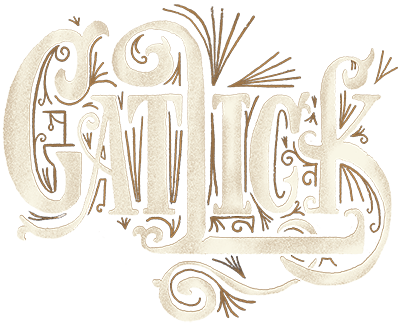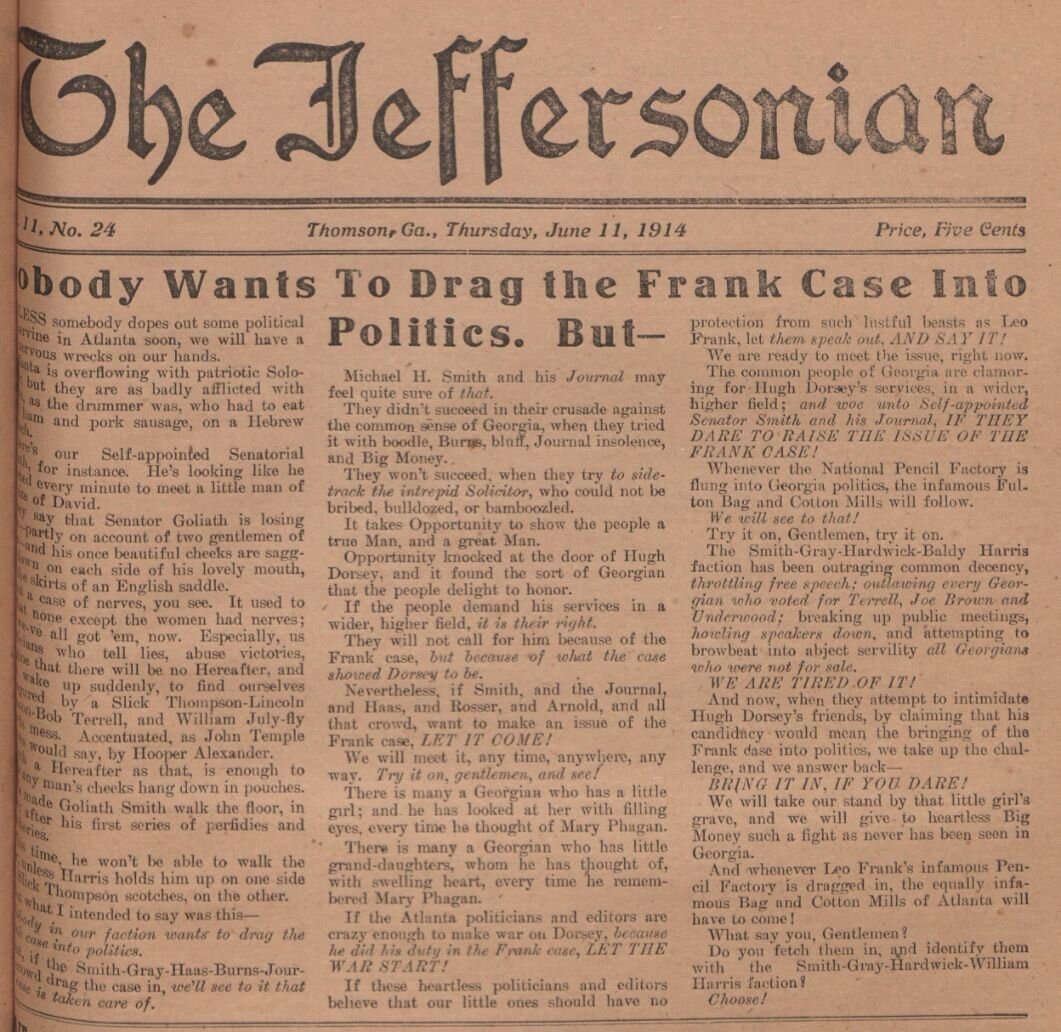Visual Artifact Page

FUlton bag & cotton mill
Circa 1914
mass meeting flyer
the faces of tom watson
Tom Watson is one of the more notorious personalities in Atlanta history.
In the late 1800s he was a progressive voice in Georgia politics. He became a U.S. Senator and was at one time the VP candidate on the Democratic ticket. However, later in life, Tom Watson morphed into a darker and more sinister political force.
In 1914, he launched a vicious, anti-Semitic smear campaign against Leo Frank.
tom watson’s jeffersonian
Tom Watson published his own newspaper, The Jeffersonian, known for its anti-Semitic, anti-Catholic, and racist views.
This article, from June, 1914, mentions both Leo Frank and the Fulton Cotton Mill Strike.
Operative #115 - Harry preston
A Harry Preston spy report, submitted to Oscar Elsas.
Operative #115 - Harry preston
A Harry Preston spy report, submitted to Oscar Elsas.
Operative #115 - Harry preston
A Harry Preston spy report, submitted to Oscar Elsas.
the tent colony
On September 1, 1914, strikers moved into a tent colony. Handwritten caption says, “UNDER CANVASS, FIGHTING FOR JUSTICE.”
TENT COLONY
A photo featuring the children of the union tent colony.
tent colony
MESS TENT
Captions read “FULTON BAG & COTTON MILLS STRIKERS” & “GATHERING AT THE MESS TENT FOR DINNER.”
TENT “KITCHEN”
Food for the strikers was prepared here.
children of the tent colony
tent colony
Strike leadership acquired the tents from the Georgia National Guard. They were not in pristine condition, which often led to leaks and collapse.
children of the tent colony
Caption reads, “A FEW OF THE CHILDREN. WHAT WILL BE THEIR FUTURE?”
STRIKE LEADERS
Strike leader Ola Delight Smith poses next to John Golden, President of the American Federation of Labor.
atlanta georgian
A front page of the Georgian with the headline “Mill Strikers Open Warfare on Child Labor.”
Atlanta georgian
A front page of the Georgian features a photo of some of the child laborers of the Fulton Bag & Cotton Mill.
“picket line ready for duty”
tent colony
tent colony
A striking family poses outside their tent.
a doctored photo
When Ola Delight Smith’s scrapbooks from the strikes were discovered in the 1980’s, it became clear that she had manipulated some photos to make the number of striking workers look larger than it was. This photo is an example of two photos being “stitched’ together to make a composite image. Several people on the right side of the photo also appear on the left side. Can you find them?
double-vision?
Three people who appear in both sides of the photo have been highlighted above.
strikers’ journal
For awhile, strike leadership circulated small newspapers like this around Atlanta, in an effort to gain sympathy and garner financial support for the “White Slaves in Atlanta.”
bulletin
A circular distributed by Local Union 886 in July of 1914.
george muse clothing co.
In the summer of 1914, Oscar Elsas confronted the executive committee of the Men & Religion Forward Movement on the top floor of the George Muse Clothing Company. Today the Muse building still stands in downtown Atlanta and was converted into lofts in the 1990s.
william smith (
1880-1949)
When the Leo Frank trial began, William Smith served as legal counsel for Jim Conley, an African American sweeper at the National Pencil Company.
william smith claims conley is guilty
More than a year after the trial, William Smith shocked Atlanta by announcing his new belief that Leo Frank was innocent. After a year-long period of exhaustive research, he’d come to believe his client, Jim Conley, was the killer of Mary Phagan.





























